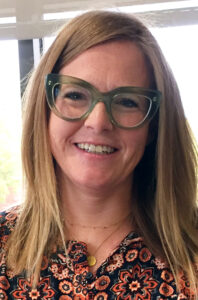(This is the second in a series of articles by faculty in the Theology Department of St. Ambrose University in Davenport about concepts from their new course: “Just Theology.”)
By Ella Johnson
As Professor Micah Kiel mentioned in this series last month, our new course called “Just Theology” at St. Ambrose University is asking our students to “evaluate the relationship between belief in God and just action in the world.” One of the ways I am asking my students to do this is through applying key Catholic Social Teaching principles (i.e., the dignity of the human person, subsidiarity, the common good, solidarity) to various contemporary situations.

The call to apply the church’s teachings on social matters to specific circumstances is made explicit by Pope John XXIII in his 1961 encyclical, “Mater et magistra” (Christianity and Social Progress). He identifies the process of seeing, judging and acting as the way we should proceed.
Three stages should normally be followed in the reduction of social principles into practice. First, one reviews the concrete situation; second, one forms a judgment on it in the light of these same principles; third, one decides what, in the circumstances, can and should be done to implement these principles. These three stages are usually expressed in three terms: look, judge, act.
It is important for our young people to grasp this method and to practice it. Knowledge acquired in this way does not remain merely abstract but becomes something that must be translated into action (#236-237).
Although the phrase “look (or see), judge, act” emerged in Catholic social tradition, it describes a process that many people throughout history have used implicitly or explicitly to: observe situations, evaluate them according to the principle of good and right, and to act in ways to improve the situation. The Rev. Martin Luther King Jr., for example, observed the injustice of racism in the U.S., denounced it as morally wrong and acted out of his faith convictions to advocate (and eventually die) for racial justice.
One of the reading assignments for my class, from Erin Brigham’s “See, Judge, Act: Catholic Social Teaching and Service Learning,” explains the three-stage process in detail. The first step of seeing entails social analysis. In this stage, we work to get a complete picture of the situation, historically and structurally. We do this by exploring how a particular situation has developed and changed over time and what structures such as politics, the economy, social and cultural norms relate to the situation. For instance, the water crisis in Flint, Michigan, when viewed in this light reveals systemic racism working in forms of segregation and unequal resource allocation. In other words, the majority of inhabitants negatively affected by the policy decisions made were African American.
The second step of judging involves evaluating a situation in light of Catholic Social Teaching principles. In class, we discussed the tradition of “just-war” theory in which proportionality, intention and the effect on the poor and environment are some of the many factors that we should consider when determining whether going to war is necessary.
These two steps of seeing and judging lead to the final step of acting. Both the actions of charity and justice, which Kiel discussed last month, are necessary. Charity responds to immediate needs, like donating canned goods to soup kitchens. Justice aims at addressing the root of the problem, like the reasons that people go hungry in the first place. This requires political and civic engagement to work to change systems, policies and institutions.
As my students and I have been discussing, it can sometimes be a struggle to make a direct connection between an unjust situation, religion and social action. In fact, many of us are quite comfortable keeping these areas of our lives separate. The see-judge-act process challenges us to integrate these areas of ourselves and, perhaps, to begin to act in new and sometimes uncomfortable ways. We are learning that Catholic Social Teaching is not another scholarly tradition to memorize for a test; instead it directly relates to in the situations we see in our daily lives and the decisions we make to respond with social action or not.
(Ella Johnson, PhD, is an assistant professor in the Theology Department of St. Ambrose University in Davenport.)











